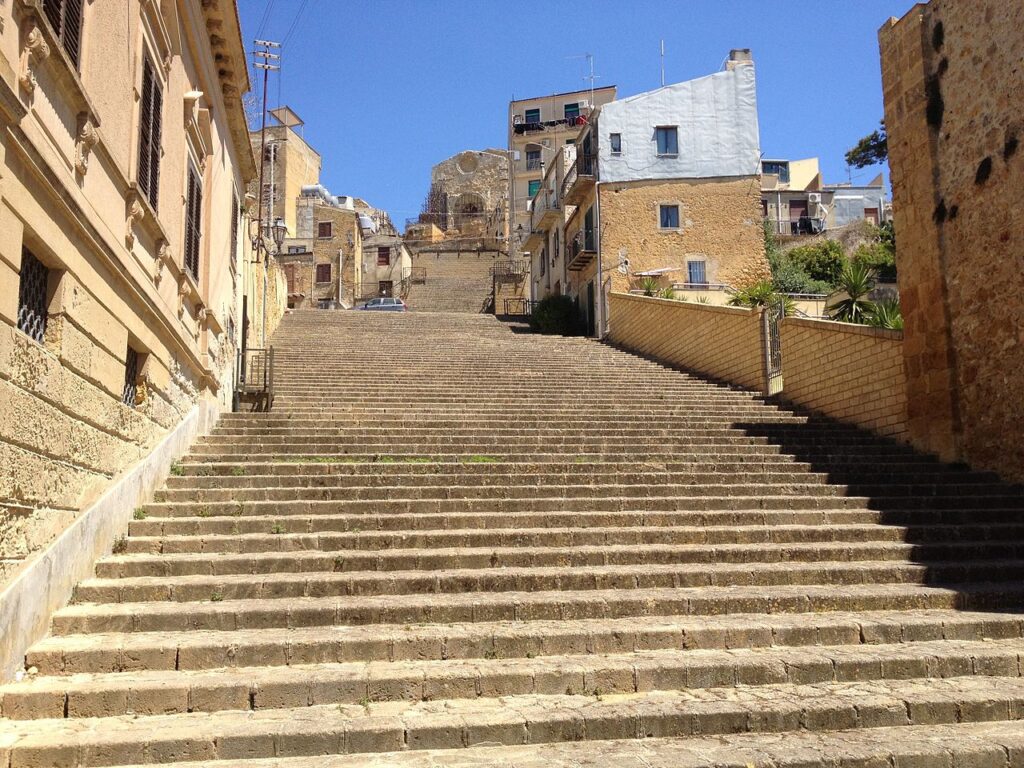Naro, a tiny but remarkable medieval and baroque jewel in Agrigento province, is just a few kilometers from the Greek Temple Valley.
This monumental city is steeped in history. It was home to the Sicani, who were the oldest inhabitants of the island. They are now gone, along with the Normans, Swabians, and Spaniards. You can see evidence of their presence everywhere, from the old city gate which is the last one from seven, to the mosque that was made into a Norman Duomo in the hands of Earl Ruggero. The Medieval Chiaramonte Castle, which rises at the top of the city, is another witness to these passages. It houses a beautiful exhibition of stunning women’s clothes dating back to 800s.
These monuments provide information about the city’s rich history. It was awarded the Fulgentissima title (Splendour), and had a seat at the Sicilian Parlament. There are many churches that are rich in art, and it is worth visiting. The Mother Church to Maria SS Annunziata, which houses statue of the Madonna of the Chains (by Antonello and Giacomo Gagini), an Annunciation by Domenico Provenzani on canvas, and a Madonna and Child by the Gagini School and the medieval baptismal fountain. The Saint Caterina Church evokes a past atmosphere with its crypt, statues, and partially visible medieval frescos. There is also the Benedictine Santissimo Salvatore Church, which has a rich baroque facade in “spagnolesco”. The Narese Baroque’s culmination is Saint Francesco Church, which was frescoed in the style of Domenico Provenzani. During weekdays, you can also visit the City Library Feliciana with its rich book heritage.
In the pages of Simonetta Agnello Horby and Sciascia, Naro is revealed. The last tells us about an ancient tradition that the righteous, “…take tours of Sicily to say goodbye to seven special places: the Castle of Naro that is windswept all day; Caltabellota that wraps around the rock; Mount Erice that faces Africa; Ustica that lies in a green sea; Stromboli that mixes with the waves; Ortigia that was once an ancient Greek island …”. Naro was also the location of many films including “Il Giudice Livatino”, “La scomparsa de Pato”, and others. In 1934, Naro hosted the first Almond Blossom Festival.
The Feast Saint Calogero is the most significant event for Naro’s inhabitants. This black Patron Saint is celebrated twice a year, on 18th June and 25th June.
You should taste the Naro delicacies, just as important as its monuments. To sample the best of Naro’s cuisine, you will only need to stop at a “trattoria”, where you can enjoy the delicious local dishes. It is your moral obligation to finish your meal with a good book.
